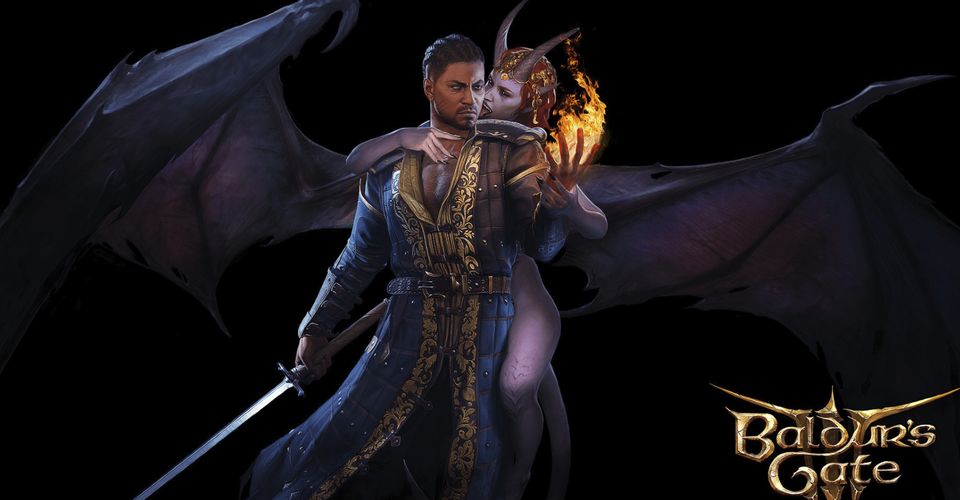Baldur’s Gate 3: Building a Warlock (Tips, Tricks, & Strategies)

Warlocks are the wielders of otherworldly magic in the world of Baldur’s Gate III. After creating a pact with their patron they gain these abilities, one might think it is a small price to pay. Players new and old to the Baldur’s Gate series will know that character creation is one of the most important parts of the game. When building a Warlock, players should consider several different things.
The city of Baldur’s Gate is within the Forgotten Realms, one of the various Dungeons and Dragons worlds. Due to this, character creation is entirely based around the way a player would create their character in the fifth edition of D&D. As the game is still in early access, players do not have every option off of the bat. However, there are still plenty of options for players to sink hours into.
Races and Subraces for Warlocks in Baldur’s Gate III

In D&D, nearly every choice a player makes in character creation affects what abilities are useful to the player and which ones will always fall flat. The race and origin options can help boost the player’s initial stats before they edit their abilities or skills. The race will directly affect the player’s abilities, while their origin will give them two skill proficiencies.
The current race choices for players are the Elf, Tiefling, Drow, Human, Githyanki, Dwarf, Half-Elf, and Halfling. Warlocks have their magic entirely based in Charisma, so this will be the most important stat to look at when picking a race. Top choices that give a boost to the player’s Charisma are Tiefling, Drow, Human, Half-Elf, and Halfing. Out of these the Tiefling and Half-Elf are the best as they get an automatic +2 to Charisma rather than a +1.
With a Tiefling, the character also gains Hellish Resistance and Darkvision. Out of the subraces available, Asmodeus, Mephistopheles, and Zariel, there isn’t much of a difference. This depends on whether the player wants to focus more on weapons or more on magic. For a magic focus character, Asmodeus and Mephistopheles are the best as they add a +1 to the character’s Intelligence. Whereas Zariel adds a +1 to Strength.
With a Half-Elf, players gain Fey Ancestry and Darkvision. As far as stats go, Half-Elves get a plus two in Charisma as well as two points to add to any of the other stats. In this case, Intelligence, Wisdom, and Dexterity are all good choices. There are three subraces available here as well. Between High Half-Elf, Wood Half-Elf, and Drow Half-Elf, High Half-Elf makes the best mage while Wood Half-Elf is better for stealth, and Drow Half-Elf is simply faster. Out of these, the High Half-Elf seems the most useful for the class, gaining an extra cantrip.
Origins and Skill Selection for Warlocks in Baldur’s Gate III

Origins are effectively a character’s background. With this being the case, depending on the player’s choice, this affects which skills they will perform best. Between the 13 different origin options currently available, players can make very different types of Warlocks. For more of a mage the Acolyte, Sage, Guild Artisan, and Hermit options are fairly good. For more of a stealthy Warlock, players can choose from Urchin, Charlatan, Criminal, and Entertainer. Finally, for more of a warrior players have the Outlander, Sailor, Soldier, and Folk Hero.After the choices in background, a player should look at their skills. Players cannot double up on proficiencies, so depending on what background they take these are the skills that are available to make proficient: Arcana, Deception, History, Intimidation, Investigation, Nature, and Religion. Between these players should pick based on how they want to play. Arcana, History, Nature, and Religion are good for more sage-like characters. Deception, Intimidation, and Investigation are great for more rogue-like characters.
Patrons and Spells for Warlocks in Baldur’s Gate III

As the game is still in early access currently, the only two patrons for players to choose from are the Fiend and the Great Old One. Starting out, these choices are more just for flavor than anything as they do not determine anything. However, as your character levels up and travels, they will have knowledge from that specific entity expand and affect more of what the player character can do.
The Fiend is a hellish being that has bestowed magical abilities onto the character. Warlocks with a Fiend patron will receive hellish blessings from corruptive work and destruction. The Great Old One is an eldritch being, barely able to be perceived on this plane. Warlocks of the Great Old One gain powers over entropy and the mind for their services towards an unknown end.
Starting off, players will get the option of two cantrips and two level-one spells to know. Cantrips are spells that can be cast at any time and are unlimited. Leveled spells usually can only be cast once per day or once per short rest, so choose and use them carefully. There are eight cantrips and 10 level one spells for players to choose from. These spells have a variable of uses and will be listed out below.
Cantrips:
- Blade Ward – Last two turns and gives the caster resistance to bludgeoning, piercing, and slashing damage from weapon attacks.
- Chill Touch – This attack spell lasts two turns dealing 1d8 Necrotic damage to the target. Necrotic damage does not allow the enemy to heal from this damage within combat. Undead creatures hit by this will get disadvantage on their next attack roll.
- Eldritch Blast – This attack spell sends a beam of energy at an enemy that deals 1d10 Force damage.
- Friends – Lasts 10 turns and enchants a creature giving the player advantage on Charisma checks against it.
- Mage Hand – Conjures a spectral hand that lasts as long as the caster is concentrated on it. This hand can manipulate objects, throw things, and attack enemies.
- Minor Illusion – Creates an illusory image to distract enemies, drawing them away or towards something.
- Poison Spray – Creates a puff of gas that deals 1d12 damage to anyone caught inside of it.
- True Strike – Lasts for two rounds, giving the player advantage on attacking the targeted enemy.
Out of the cantrips, depending on the intended playstyle, the most useful in standard encounters are Blade Ward, Chill Touch, Eldritch Blast, Poison Spray, and True Strike. While most of the other spells are fairly situational, they could still be employed by stealthier playstyles fairly effectively.
Level One Spells:
- Armour of Agathys – A frosty form of armor that lasts one round. This gives the player an extra five temporary hit points and deals five cold damage to any creature that hits the player in melee.
- Arms of Hadar – An attack spell that conjures dark tendrils that deal 2d6 Necrotic damage and makes the target unable to take a reaction.
- Charm Person – Lasts 10 rounds and causes the charmed humanoid to be unable to attack the caster and gives the caster advantage on Charisma checks against it.
- Dissonant Whispers – An attack spell that deals 3d6 damage and inflicts the target with frightened.
- Expeditious Retreat – Turns the casters dash into a bonus action for one round.
- Hellish Rebuke – An attack spell deals 2d10 fire damage.
- Hex – Curse a creature to deal an extra 1d6 damage when attacking the target and gives the target disadvantage on an ability check of the caster’s choice. Lasts as long as the player can hold concentration and allows the player to cast on a new host if the first is killed.
- Tasha’s Hideous Laughter – An enchantment spell that lasts 10 rounds, causing the target to laugh and stay prone.
- Protection from Evil and Good – Protects a target against aberrations, celestials, fey, fiends, and undead.
- Witch Bolt – An attack spell that deals 1d12 lightning damage for two rounds as long as concentration is kept.
These spells are all over a lot more useful. For the best damaging character, Hellish Rebuke and Witch Bolt are great choices together. For more of a buffing character Hex and Tasha’s Hideous Laughter are great. For a defensive role Armour of Agathys and Protection from Evil and Good. Mixing a matching for a solid and more rounded character is also a good choice.
Baldur’s Gate III Early Access is now available on PC.
About The Author

















